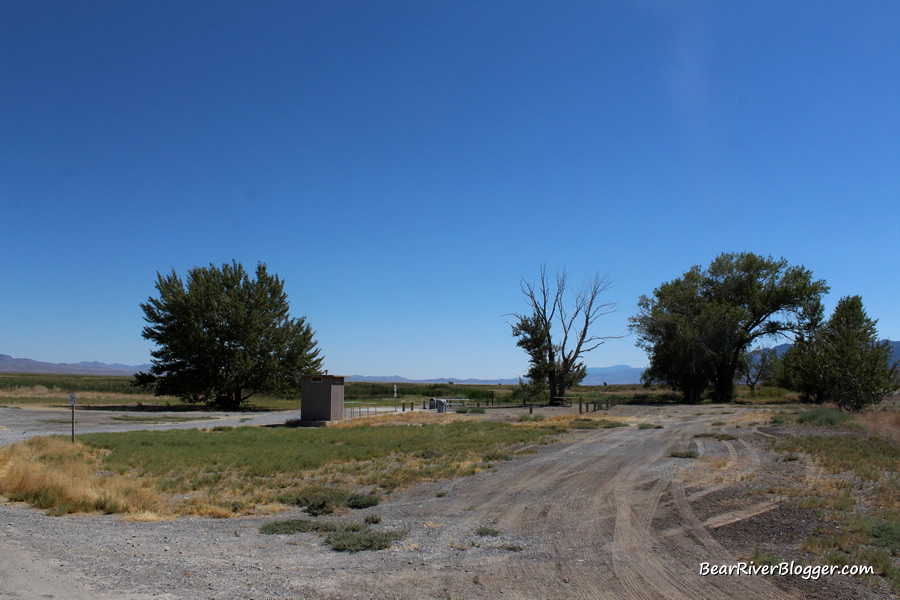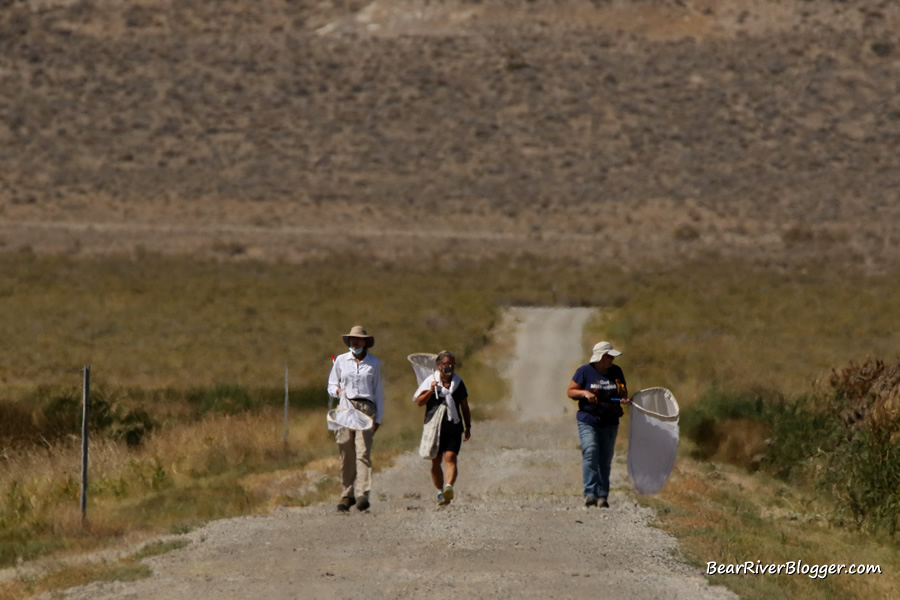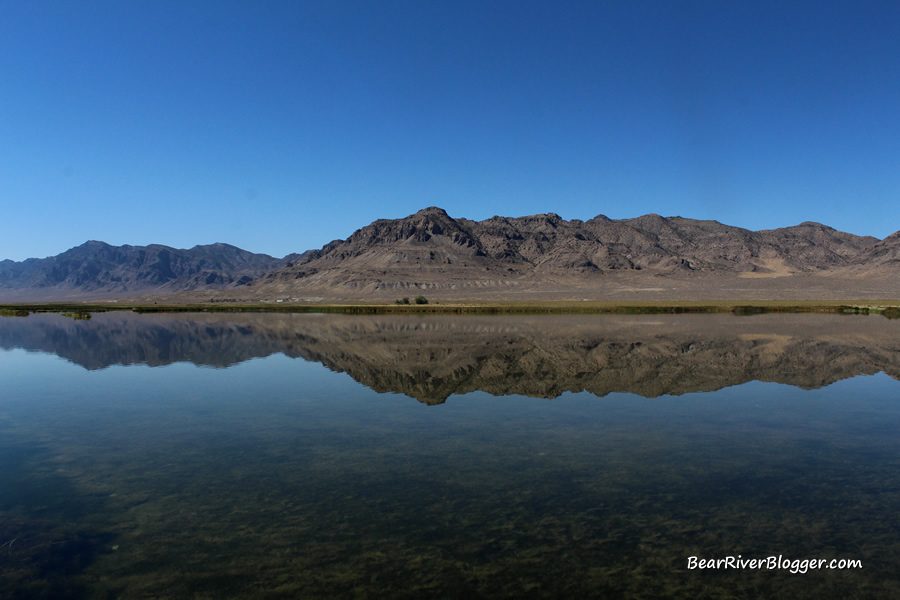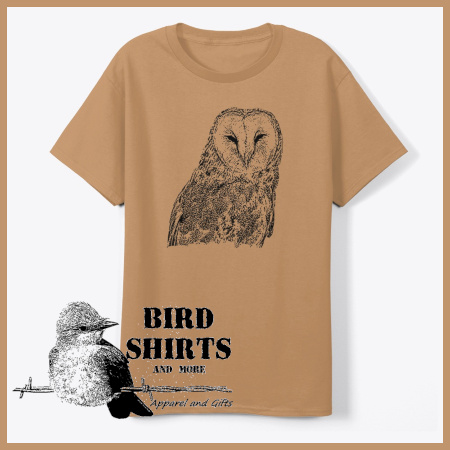Tucked away in the far southern portion of Utah’s western desert is, what others have previously termed, “an oasis in the desert”, a hidden slice of nature brimming with scenery and wildlife in a most unlikely and quite unruly spot.
Fish Springs National Wildlife Refuge is indeed such a place, a nature preserve that offers food, rest, and shelter for hundreds of species of birds in a very inhospitable and unforgiving location.
A couple of months ago, I spent the day traveling to and enjoying the sights and sounds of Fish Springs NWR and the surrounding area. It’s a trip I don’t get to partake in very often, but when I do I enjoy every mile of it.
I am not only a bird watcher but I love to visit, photograph, and blog about remote, out of the way places, and Fish Springs certainly fits that description to a “T”.
About Fish Springs NWR
Established in 1959, Fish Springs National Wildlife Refuge is owned and managed by the U.S. Fish and Wildlife Service for the purpose of protecting and managing habitat for migratory birds within the Pacific flyway. This includes providing breeding habitat, a source of food, a place to rest, and much-needed water in this very arid region to a variety of bird species that migrate through this desert area.
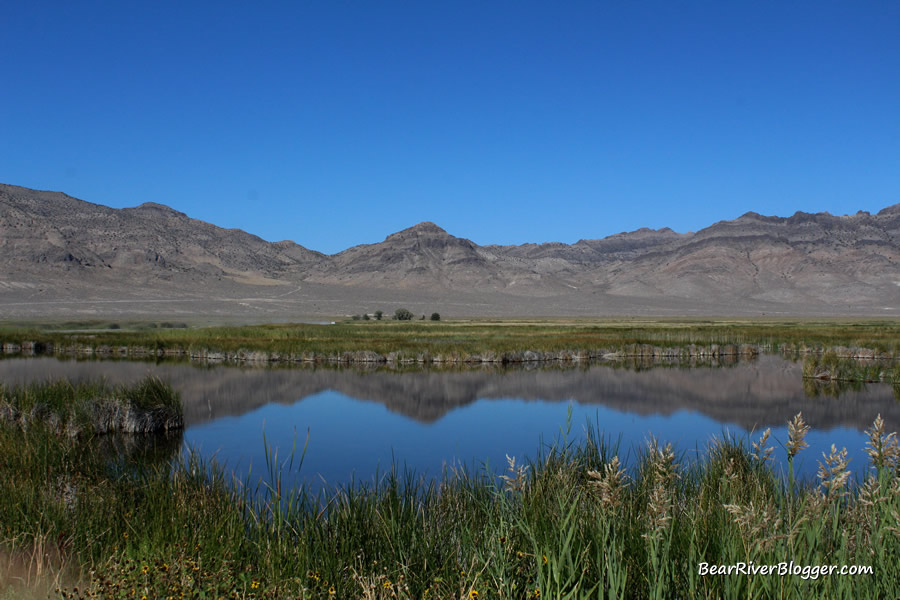
Even though migratory birds are the primary focus of the refuge, other forms of wildlife, including birds that don’t migrate but are permanent residents of the area, certainly benefit from the refuge and its habitat as well.
Fish Springs NWR is located in a remote part of Juab County along the historic Pony Express Trail about 132 miles southwest of Salt Lake City, Utah. From Salt Lake, it’s approximately a three-hour drive to the refuge, with about 60 miles of it on a dirt road that winds through some very rugged but beautiful mountains of the western desert.
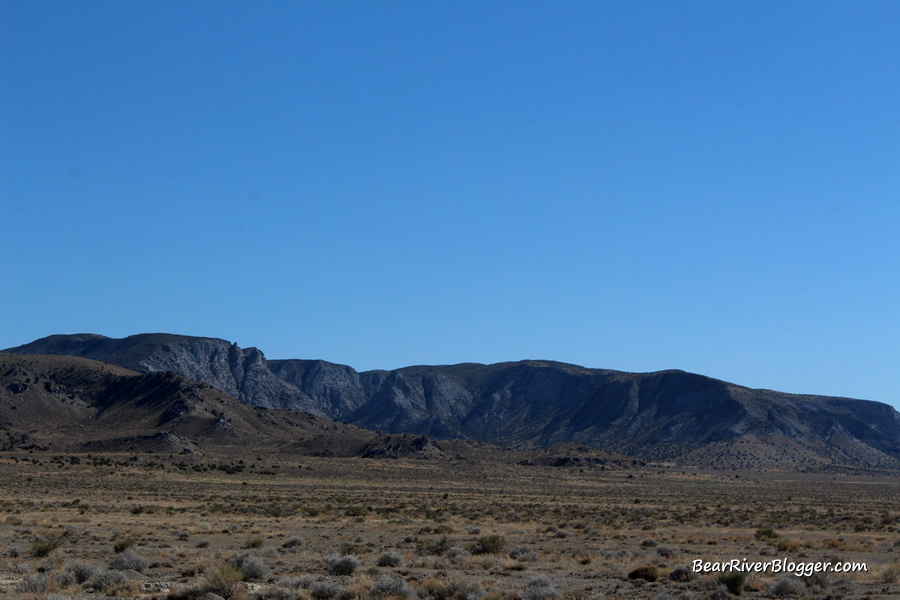
When compared in size to the Bear River Migratory Bird Refuge, Fish Springs NWR is rather quite small in total acreage. This small but vital piece of habitat is only 17,992 acres in size with about 10,000 acres of it consisting of wetland habitat.
Being a desert, there are no rivers, creeks, or streams feeding the refuge. Fish Springs is totally spring fed with about 22,000 to 27,000 acre-feet of water being poured out onto the marsh from these natural springs. Most of this spring-fed water is recharged from areas outside the fish springs flat.
Making the Journey to Fish Springs NWR
As mentioned before, I have recently visited Fish Spring National Wildlife Refuge and have done so numerous times in years past. It is a four-hour drive for me to just get to the refuge so I can’t visit it as frequently as I do the Bear River Refuge but I certainly enjoy it just as much.
Traveling to Fish Springs NWR does require a bit of planning and being prepared for possible emergencies along this most remote and somewhat rugged region. Traveling along the Pony Express Trail from the Highway 36 turnoff near Faust, Utah, is about an hour or so drive on a dirty and oftentimes very dusty road.
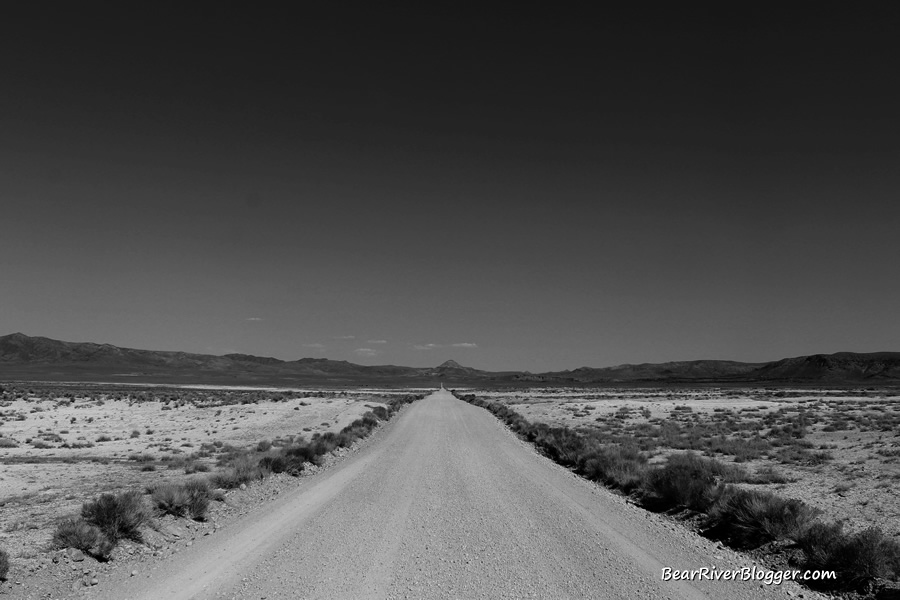
I have spotty cell phone coverage on the drive but I do find some off-and-on coverage along the way and even at the refuge itself. I am not sure if other cell phone services have similar coverage in this area but I have been able to make calls from my cell phone from several spots along the Pony Express Trail and even from the refuge itself with little problem.
It’s just hit or miss where my phone picks up a signal but I do get some coverage along the way.
Depending on which route you take to get to where you turn onto the Pony Express trail near Faust, Utah, you will want to gas up at one of the stations along the way. I go through the city of Tooele, Utah, and top off my tank there and fill back up when I go back through on the way home.
Bring plenty of food, water, and any other essentials you might think you need for such a journey. A cooler full of ice is recommended, especially during the summer as there is very little shade during the hot summer months on the refuge.
One thing I can’t suggest enough is to check your tires, making sure they are in good shape and designed for off-road use. The Pony Express trail is a dirt road that is sometimes graded and maintained but being a dirt road in the western desert, it does have a fair share of rocks, ruts, and debris, and people do sometimes experience flat tires along the way.
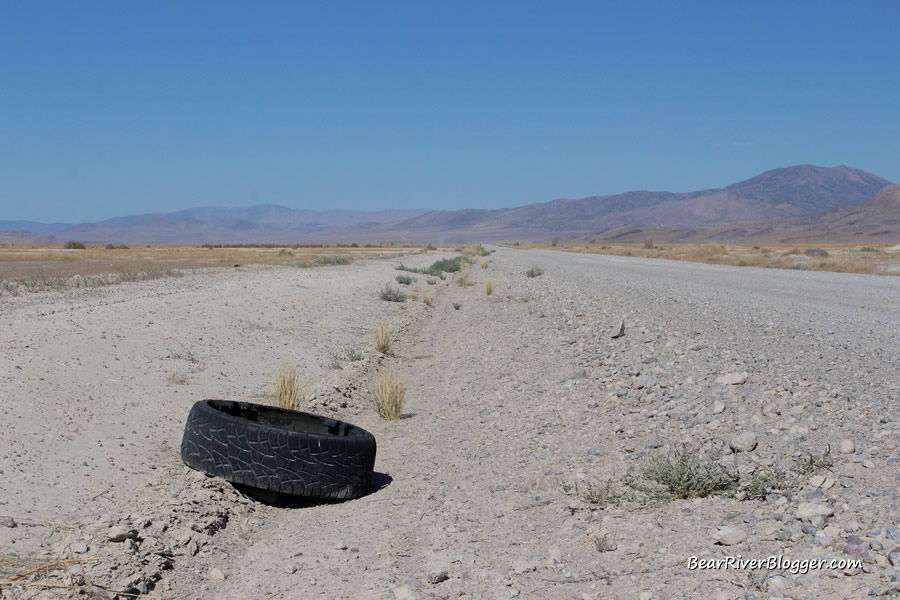
Make sure you have a spare tire, full of air, in good shape with all the essential tools for changing a tire in case a tire does get damaged along the way. Many people do drive the road in a passenger car but keep in mind, it is a rural dirt road and precautions should be taken as such.
In fact, a member from our group this past September had not one but two flat tires driving to and from Fish Springs. Fortunately, another traveler in the area offered some assistance, and eventually, cell phone coverage was found and a tow truck was called.
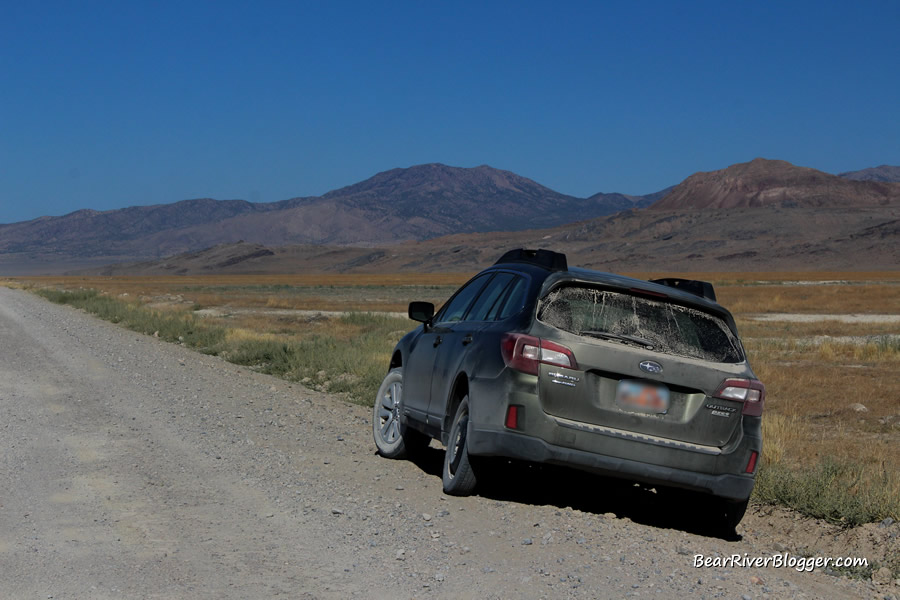
Fish Springs National Wildlife Refuge is a fantastic place to visit, but keep in mind, it is in a very remote part of Utah, and emergencies can happen so just be prepared. I can’t stress that enough.
Contacting Fish Springs NWR
Contacting Fish Springs National Wildlife Refuge can be tricky at times, however. Currently, from last I have heard, there is no full-time on-site staff or refuge manager, but they do have a website with contact information.
Administrative duties, I have been told, are currently being taken care of by the Bear River Migratory Bird Refuge, so if you are trying to contact Fish Springs with no luck, I would suggest getting in touch with the manager at Bear River to see if they can assist you in any way.
What can I do on Fish Springs?
Fish Springs National Wildlife Refuge offers a variety of activities for people to enjoy, including bird watching, general wildlife viewing, nature photography, a self-guided auto tour route, historical markers for the Pony Express Trail, some environmental and interpretation signage, and waterfowl hunting.
I personally visit the refuge for bird watching and photography but also enjoy the remoteness and the great desert scenery as well.
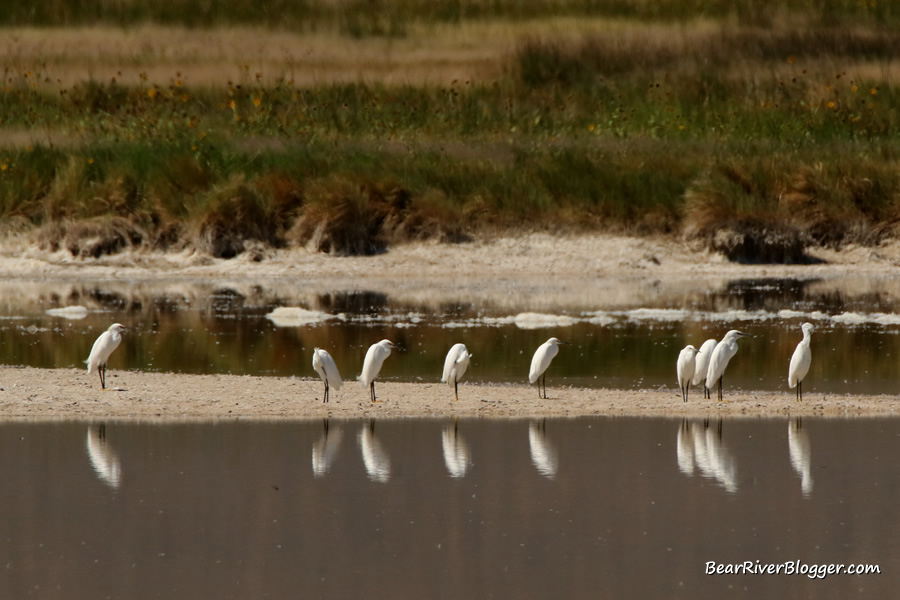
One of the best parts of visiting the refuge is the 11-mile self-guided auto tour route. This gravel road, much like the one on the Bear River Migratory Bird Refuge, takes you out into and around much of the refuge’s habitat. You get a great view of the wetlands and wildlife that live on refuge.
A small picnic area is located at the start of the auto loop with a few trees, tables, and a rustic restroom. The auto tour is open sunrise to sunset 365 days a year but I always suggest contacting refuge staff for any possible changes to this before such a long trip is taken.
Bird watching on Fish Springs National Wildlife Refuge
Birds are the primary focus for Fish Springs NWR and why many people visit this remote sanctuary. I to come for the bird watching. The refuge has a great variety of birds to view and photograph, including wading birds, shorebirds, waterfowl, hawks, eagles, and songbirds.
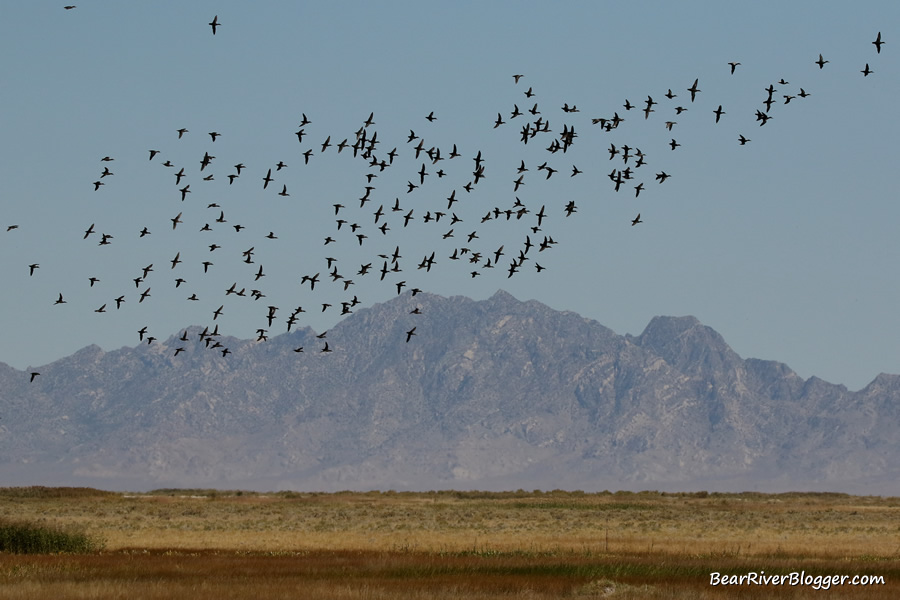
In fact, according to Ebird statistics at the time of this writing, Fish Springs NWR is listed as the top birding hotspot in Utah for the total number of bird species observed and recorded by birders. It even outbid the Bear River Refuge which is currently listed 3rd on the list.
So far, 289 species of birds have been observed and recorded at Fish Springs NWR, and some of the more notable bird species include tundra swan, eared grebe, greater yellowlegs, virginia rail, long-billed dowitcher, ruby-crowned kinglet, mountain bluebird, townsend’s solitaire, American avocet, golden eagle, great horned owl, merlin, northern goshawk, and say’s phoebe.
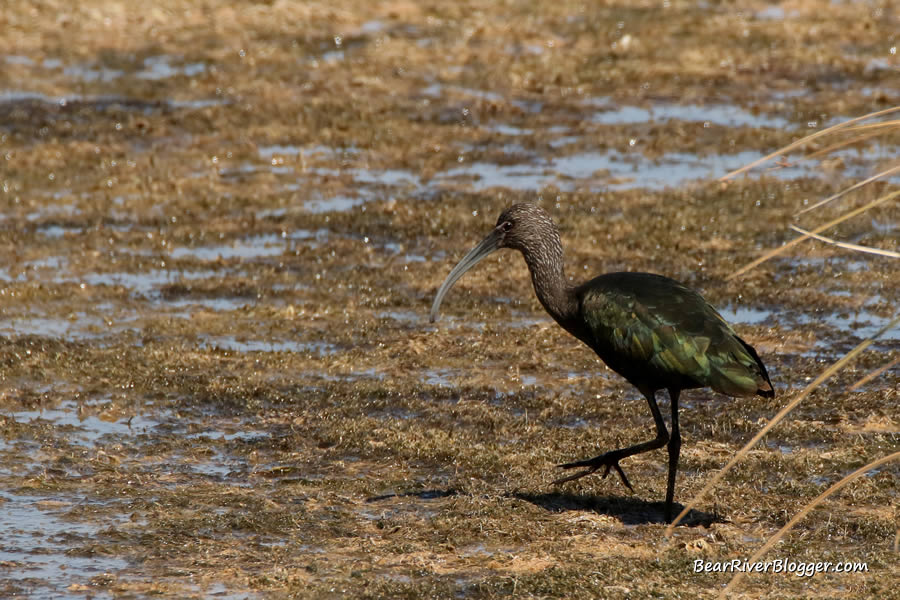
There are a variety of birds that live on the refuge year-round, but spring and fall are when the refuge comes alive with numerous migrating birds that pass through the refuge for a few short weeks or more. Other birds, including some shorebird species, come to the refuge for the summer to breed.
All in all, Fish Springs National Wildlife Refuge is a bird watchers paradise with a great variety of birds to observe and enjoy.
The best time to visit Fish Springs NWR is during the months of March and April, during spring migration when new birds are migrating through and the bugs haven’t come out yet. Fall is another great time for visiting Fish Springs, but if you go on or after the first Saturday in October, you will be there during the waterfowl hunting season.
Monarch Butterflies on Fish Springs National Wildlife Refuge
A little known fact about Fish Springs NWR is the abundance of interesting insects that live on the refuge. Butterflies, dragonflies, and many other important bugs make up their part of this most interesting and vital ecosystem.
The most notable, of course, is the monarch butterfly, which migrates to the refuge and uses it’s offering of milkweed to lay another round of eggs and utilizes a great supply of sunflowers for nectar during fall migration back southward.
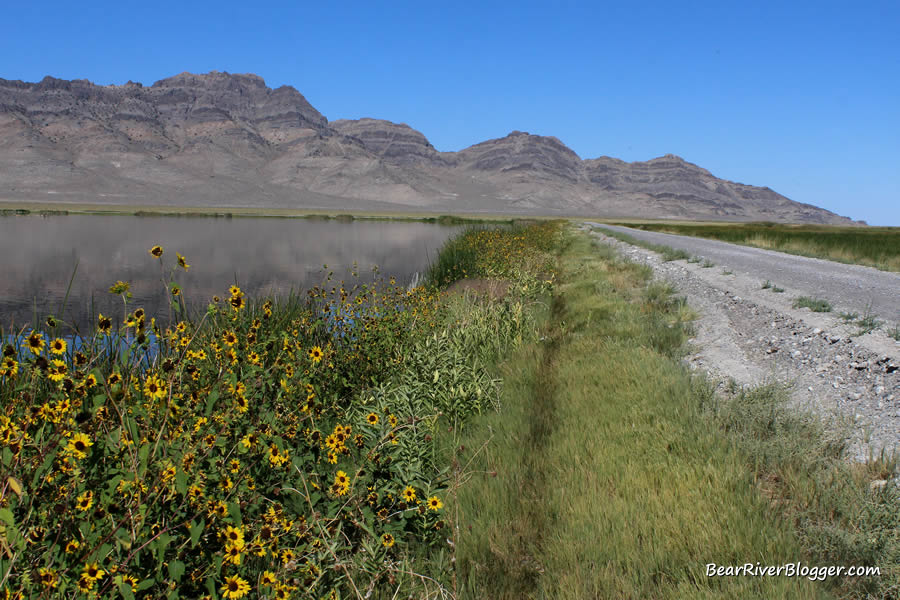
This past September, on my most recent trip to Fish Springs, a few of us set out to find and tag monarch butterflies as they migrated south to their wintering grounds.
This event, with proper permission and permits from the refuge, was in efforts to help tag monarch butterflies with the hopes of finding out more about their migration route and wintering areas.
From my recollection, we determined we were about a week late and only found about a dozen monarch butterflies on the auto tour route roads, but were unsuccessful in tagging any for the research project. But, nevertheless, just finding some of these most beautiful butterflies on the refuge made the whole trip worthwhile.
I actually had no idea monarch butterflies migrated to and laid their eggs at Fish Springs so I learned something I had not known before and isn’t that what getting out in nature is all about, anyway?
Wild mustangs and pronghorn antelope.
I can’t write a blog post about Fish Springs without talking at least a little bit about the wild horses and pronghorn antelope that can be viewed on the drive down.
The Pony Express Trail is certainly well-known for its wild mustangs and pronghorn antelope. The wild horses are especially sought after by photographers, tourists, and nature lovers who come to hopefully see these most incredible animals living in a very rugged and unforgiving environment.

Both the wild horses and pronghorn can be found in various areas along the Pony Express trail as one heads to Fish Springs, and I have personally found from all my trips to the region, the area around Simpson Springs is the most common place they can be viewed.
I actually came across dozens of antelope and hundreds of wild horses on this particular drive to Fish Springs and an earlier blog post depicts a story I wrote about the experience.
Conclusion
Fish Springs NWR is a small but vital piece of the bird migration puzzle, and it helps support hundreds of species of birds, both migratory and year-round residents, with the food, water, nesting cover, and shelter in a most inhospitable environment.
It also offers something for the bold traveler willing to take on such a journey with great scenery, wildlife, history, culture, and a sense of being a part of nature, something that can only be felt in such a remote and isolated area.
I fear my words and pictures really can’t fully describe and accurately depict the beauty of Fish Springs National Wildlife Refuge, it just has to be experienced.
It is a very remote but quite breathtaking part of Utah’s western desert. The drive is long and dusty, but I personally find the reward is more than worth the time spent in pursuit of one of nature’s great treasures.
Subscribe to our blog
We appreciate your readership and suggest if you like this blog to head over to our subscription page and sign up for email notifications for future blog posts.
Bird Watching Apparel
If you’re looking for birding related gifts and apparel for someone, take a look at our online store featuring some of our own photographs turned into unique gifts.

As a reader of our blog, we offer you 20% off all products on our store by using the coupon code save20 during checkout.
Visit our Bird Shirts and More online store to check out our products. New products are constantly being added so check back often.
Images of Fish Springs NWR




